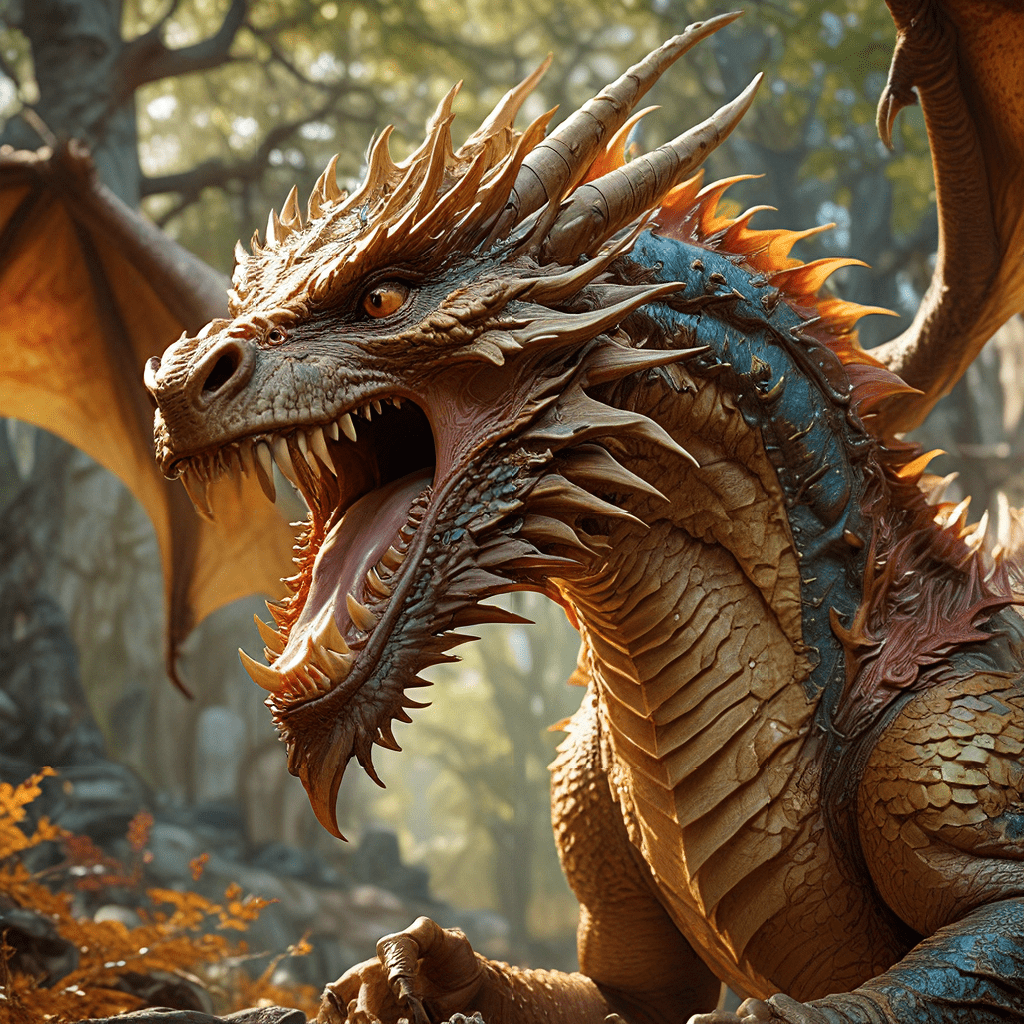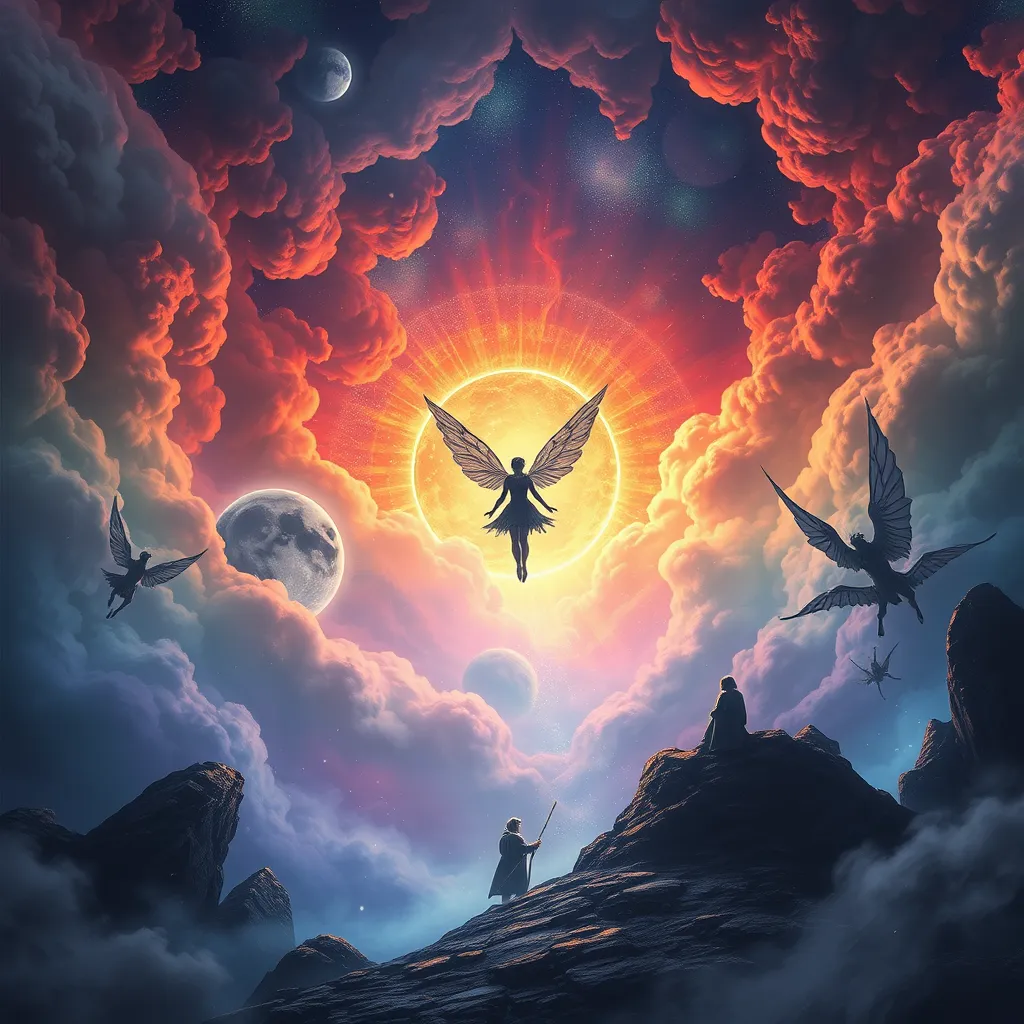From Myth to Monster: The Evolution of Dragon Lore in European Folklore
The Ancient Roots of Dragon Lore
Dragons, with their fearsome scales, fiery breath, and legendary strength, are some of the most enduring creatures in human mythology. Their origins lie deep in the ancient past, entwined with the earliest human attempts to understand the world around them. Dragons have captivated imaginations across cultures, appearing in stories, art, and folklore for millennia. But what are the roots of these mythical beasts? Where did they come from, and why have they captivated our imaginations for so long?
The fascination with dragons, as we know them, stems from the ancient world, where fantastical creatures were often seen as representations of powerful, often dangerous natural forces. Early humans struggled to explain natural phenomena such as lightning, volcanoes, and floods. Dragons provided a way to conceptualize and cope with these forces, embodying their power and unpredictability. They were symbols of the unknown, the untamed power of nature, and the mysteries that resided in the world beyond human understanding.
Serpents of the Sky: Early Dragons in Eurasian Mythology
The earliest depictions of dragon-like creatures appear in ancient Mesopotamia and the Indus Valley. In ancient Mesopotamia, dragons were associated with the god Marduk, who defeated Tiamat, a primordial dragon symbolizing chaos, to create order. The image of a serpent-like dragon, often with multiple heads, appears frequently in Mesopotamian art and mythology, reflecting a deep-seated fear of chaos and a desire for order.
Meanwhile, in ancient China, dragons were viewed as potent symbols of power, strength, and good fortune. They were associated with rain, fertility, and the emperor’s rule. These dragons were often depicted as wise and benevolent, protecting the land and its people. Their serpentine bodies, adorned with scales and claws, represented the interconnectedness of nature and the power of the natural world.
From Guardians to Guardians: Dragons in Ancient Greece and Rome
In ancient Greece, dragons were often portrayed as guardians of treasure, a motif that would later become central to European dragon lore. The dragon Ladon, for example, guarded the golden apples of the Hesperides, a task entrusted to him by the goddess Hera. Dragons in Greek mythology often represented the fierce protectiveness of divine power.
The Romans also integrated dragons into their mythology. The dragon Draco, a fearsome beast, was associated with the constellation Draco, a constellation in the northern sky. Roman emperors often wore a dragon brooch as a symbol of their power and authority. Dragons in ancient Rome, like many other cultures, represented the strength and power that the emperors sought to embody.
Beasts of the Apocalypse: Dragons in Early Christianity
The arrival of Christianity saw dragons take on a new, more sinister role. In the Christian tradition, the dragon became a symbol of evil, temptation, and the forces of darkness. The Book of Revelation, for example, describes a monstrous dragon, Satan, challenging the power of God. Christian iconography often depicted dragons as representing the devil, tempting and challenging humans to stray from the path of righteousness.
Early Christians viewed dragons as a powerful symbol of the battle between good and evil, much like the battle between Christianity and paganism. The dragon, as a creature of chaos, embodied the forces they sought to overcome, highlighting the struggle for spiritual dominance. However, dragons in Christian lore were not always portrayed as purely evil. Saint George, the patron saint of England, is famously depicted slaying a dragon, signifying the triumph of good over evil. These stories often reflect the challenges faced by early Christians in navigating the world and maintaining their faith.
The Medieval Dragon: A Symbol of Chaos and Power
During the Middle Ages, dragons reached the peak of their cultural influence in Europe. They became prominent figures in literature, art, and folklore, representing the dangers and uncertainties of the medieval world. The medieval dragon was often portrayed as a fearsome beast, capable of devastating entire villages with its fiery breath and sharp claws. This image of the dragon reflected the anxieties of the time, a period marked by war, plague, and social upheaval.
The medieval dragon was not only feared, but also respected. It was often seen as a powerful symbol of kingship and authority. The dragon’s strength and ferocity were seen as qualities to be admired, and its ability to hoard treasure reflected the desire for wealth and power. As a powerful symbol of chaos, the medieval dragon also represented the inherent dangers of the natural world and the need for courage and bravery to overcome them.
From Myth to Monster: The Evolution of Dragon Lore in European Folklore
The Ancient Roots of Dragon Lore
Dragons, with their fearsome scales, fiery breath, and legendary strength, are some of the most enduring creatures in human mythology. Their origins lie deep in the ancient past, entwined with the earliest human attempts to understand the world around them. Dragons have captivated imaginations across cultures, appearing in stories, art, and folklore for millennia. But what are the roots of these mythical beasts? Where did they come from, and why have they captivated our imaginations for so long?
The fascination with dragons, as we know them, stems from the ancient world, where fantastical creatures were often seen as representations of powerful, often dangerous natural forces. Early humans struggled to explain natural phenomena such as lightning, volcanoes, and floods. Dragons provided a way to conceptualize and cope with these forces, embodying their power and unpredictability. They were symbols of the unknown, the untamed power of nature, and the mysteries that resided in the world beyond human understanding.
Serpents of the Sky: Early Dragons in Eurasian Mythology
The earliest depictions of dragon-like creatures appear in ancient Mesopotamia and the Indus Valley. In ancient Mesopotamia, dragons were associated with the god Marduk, who defeated Tiamat, a primordial dragon symbolizing chaos, to create order. The image of a serpent-like dragon, often with multiple heads, appears frequently in Mesopotamian art and mythology, reflecting a deep-seated fear of chaos and a desire for order.
Meanwhile, in ancient China, dragons were viewed as potent symbols of power, strength, and good fortune. They were associated with rain, fertility, and the emperor’s rule. These dragons were often depicted as wise and benevolent, protecting the land and its people. Their serpentine bodies, adorned with scales and claws, represented the interconnectedness of nature and the power of the natural world.
From Guardians to Guardians: Dragons in Ancient Greece and Rome
In ancient Greece, dragons were often portrayed as guardians of treasure, a motif that would later become central to European dragon lore. The dragon Ladon, for example, guarded the golden apples of the Hesperides, a task entrusted to him by the goddess Hera. Dragons in Greek mythology often represented the fierce protectiveness of divine power.
The Romans also integrated dragons into their mythology. The dragon Draco, a fearsome beast, was associated with the constellation Draco, a constellation in the northern sky. Roman emperors often wore a dragon brooch as a symbol of their power and authority. Dragons in ancient Rome, like many other cultures, represented the strength and power that the emperors sought to embody.
Beasts of the Apocalypse: Dragons in Early Christianity
The arrival of Christianity saw dragons take on a new, more sinister role. In the Christian tradition, the dragon became a symbol of evil, temptation, and the forces of darkness. The Book of Revelation, for example, describes a monstrous dragon, Satan, challenging the power of God. Christian iconography often depicted dragons as representing the devil, tempting and challenging humans to stray from the path of righteousness.
Early Christians viewed dragons as a powerful symbol of the battle between good and evil, much like the battle between Christianity and paganism. The dragon, as a creature of chaos, embodied the forces they sought to overcome, highlighting the struggle for spiritual dominance. However, dragons in Christian lore were not always portrayed as purely evil. Saint George, the patron saint of England, is famously depicted slaying a dragon, signifying the triumph of good over evil. These stories often reflect the challenges faced by early Christians in navigating the world and maintaining their faith.
The Medieval Dragon: A Symbol of Chaos and Power
During the Middle Ages, dragons reached the peak of their cultural influence in Europe. They became prominent figures in literature, art, and folklore, representing the dangers and uncertainties of the medieval world. The medieval dragon was often portrayed as a fearsome beast, capable of devastating entire villages with its fiery breath and sharp claws. This image of the dragon reflected the anxieties of the time, a period marked by war, plague, and social upheaval.
The medieval dragon was not only feared, but also respected. It was often seen as a powerful symbol of kingship and authority. The dragon’s strength and ferocity were seen as qualities to be admired, and its ability to hoard treasure reflected the desire for wealth and power. As a powerful symbol of chaos, the medieval dragon also represented the inherent dangers of the natural world and the need for courage and bravery to overcome them.
Dragons in Literature: From Beowulf to Tolkien
Dragons have been a staple of literature for centuries, appearing in stories from ancient epics to modern fantasy novels. One of the earliest and most famous examples is the epic poem *Beowulf*, which tells the story of a hero who defeats a fearsome dragon to save his people. The dragon in *Beowulf* is a powerful symbol of both danger and the need for courage and heroism.
During the Middle Ages, dragons continued to appear in literature, often as antagonists in chivalric romances. These stories, which often involved knights slaying dragons and rescuing damsels in distress, reinforced the notion of the dragon as a symbol of evil and the need for virtuous heroes to vanquish it.
In more recent times, dragons have become popular figures in fantasy literature, particularly in the works of J.R.R. Tolkien. Tolkien’s dragons, like Smaug in *The Hobbit*, are complex and fascinating creatures, often possessing both immense power and a degree of intelligence. These dragons, while still formidable foes, are more than just mindless monsters; they are often portrayed as possessing a sense of history and a deep connection to the land they inhabit.
The Dragon’s Legacy: Modern Interpretations and Influences
Dragons continue to be popular figures in modern culture, appearing in films, television shows, video games, and other forms of entertainment. They have become icons of both fantasy and horror, their images used to represent both the wonders and the dangers of the unknown.
The popularity of dragons in modern culture reflects their enduring appeal. They are creatures that embody both our fears and our fascination with the power and mystery of the natural world. Dragons are often seen as symbols of strength, wisdom, freedom, and the beauty of the untamed wild. In contemporary culture, they serve as powerful symbols in everything from brand logos and corporate mascots to tattoos and fashion.
Theories of Dragon Origins: Naturalistic Explanations
The origins of dragon lore have been the subject of much speculation and debate. Some scholars believe that dragons may have been inspired by real-life animals, such as snakes, crocodiles, or dinosaurs. For instance, the discovery of dinosaur fossils may have contributed to the development of dragon myths in certain cultures.
The ancient world lacked the scientific understanding we have today, so they often attributed unusual or frightening occurrences to supernatural beings. The discovery of fossilized bones, particularly of large extinct creatures, could have led to stories of monstrous dragons. These discoveries, coupled with encounters with venomous snakes, crocodiles, and other large reptiles, could have further fueled the imagination, shaping the image of the dragon as a formidable, fearsome creature.
Theories of Dragon Origins: Cultural and Psychological Factors
However, other scholars argue that dragons are primarily products of the human imagination, reflecting our deepest fears and desires. Dragons, as creatures of immense power, may represent our own primal instincts and unconscious desires. They can also symbolize the fear of the unknown, the dangers that lurk in the shadows, and the power of the natural world.
Some argue that dragon myths may have arisen as a way to explain natural phenomena, such as volcanoes, earthquakes, or storms. Dragons with the power to breathe fire, create storms, or shake the earth were powerful metaphors for the forces of nature, giving people a way to understand and cope with these powerful forces.
The Dragon’s Enduring Appeal: Why We Still Love These Mythical Creatures
Dragons have captivated our imaginations for millennia, and their enduring appeal speaks to their deep-seated connection to our human psyche. They are creatures of both fear and fascination, embodying the power of the natural world, the mysteries of the unknown, and the complex nature of our own internal world. They can be seen as symbols of the ultimate challenge, a creature to be overcome, a force to be mastered, or a power to be unleashed.
The dragon’s enduring appeal lies in its ability to tap into these primal fears and desires, representing both the darkness and the light within us. They are creatures of myth and legend, but they also serve as powerful metaphors for the human experience, reflecting the beauty, the terror, and the enduring mystery of the world around us.
FAQ
**Q: What are some of the most famous dragons in literature?**
**A:** Some of the most famous dragons in literature include Smaug from *The Hobbit*, the dragon in *Beowulf*, and the dragon in *The Chronicles of Narnia*.
**Q: Are dragons real?**
**A:** No, dragons are not real. They are mythical creatures that have been created by the human imagination.
**Q: Why are dragons often associated with treasure?**
**A:** Dragons are often associated with treasure because they are seen as powerful and dangerous creatures. They are powerful enough to protect their treasure and dangerous enough to deter anyone from trying to steal it.
**Q:



